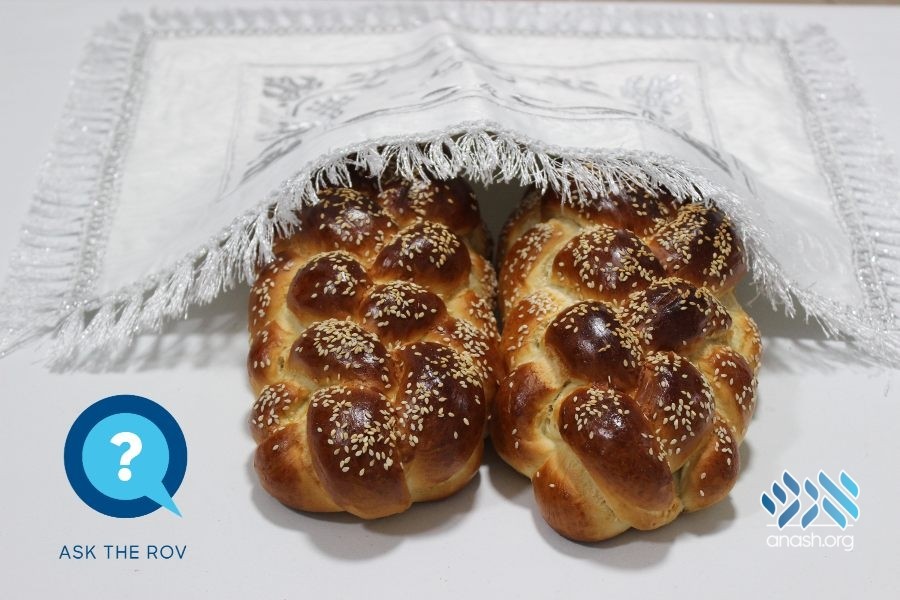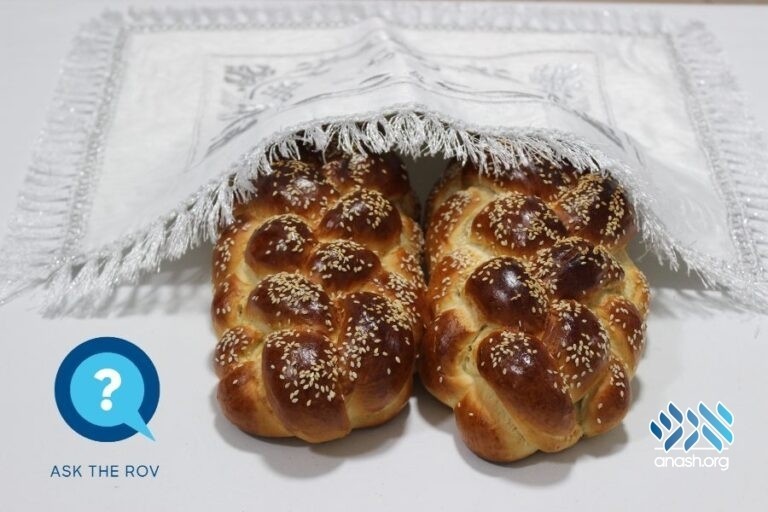א׳ ניסן ה׳תשפ״ג | March 23, 2023
Covering Challos with a See-Through Cover
Ask the Rov: Does a see-through cover work for covering challos during kiddush? Rabbi Chaim Hillel Raskin replies.

Ask the Rov: Does a see-through cover work for covering challos during kiddush?
By Rabbi Chaim Hillel Raskin – Rov of Anash in Petach Tikvah
By the Shabbos seuda, it is customary to have the challos covered. Poskim offer several reasons for this:
(1) To make it evident that the challos are in honor of Shabbos, by making it appear that they were only brought to the table after kiddush. (2) In remembrance of the mon that was covered on top and bottom with dew, we put the challa in between two cloths. (3) To avoid shaming the challa when making hagafen first on the wine, even though wheat appears earlier in the posuk about the shivas haminim and normally comes first.1
By seuda shlishis there is no kiddush and thus no shaming of the bread, so some don’t require covering the challos.2 The same would be true if one makes kiddush by the first two meals on challa. Yet, the Alter Rebbe writes that the challa should still be covered in this case due to the other reasons — to show that they are l’chavod Shabbos and as a remembrance of the mon.3
Until when should the challos remain covered?
If the reason is to honor Shabbos or to avoid the shame, it would suffice for the challos to remain covered until after kiddush. However, if the reason is to commemorate the mon that was covered until they were collected for eating, they should remain covered until they are being taken to eat. (In addition, the cover should be lifted off the challos as the dew was, instead of sliding the challos out).4
Does a transparent cover work?
If the reason is to honor Shabbos or to commemorate the mon, even a clear cover should suffice. Moreover, some say that even if the reason is to avoid shaming the challa, a clear cover is enough since the challa cannot actually see and the point is just to sensitize ourselves.5 Others, however, write that the challa itself must indeed be unable to “see” the kiddush being made, and this seems to be the Alter Rebbe’s position.6
What if one is hearing kiddush from someone else but has their own challos? Some say that only those tasting from the wine must cover their challos,7 while others argue that everyone is considered like making kiddush themselves due to the halachic principle of shome’a k’oneh (“one who hears is as if he recites”).8 Practically, everyone should cover their challos.
If one is eating mezonos after kiddush for makom seuda, the commemoration for mon may not apply (since that was their basic staple, lechem mishneh), yet the other two reasons seem to apply. At the Rebbe’s farbrengens, the mezonos was covered.
See Sources (open PDF)
From The Weekly Farbrengen by Merkaz Anash


We appreciate your feedback. If you have any additional information to contribute to this article, it will be added below.